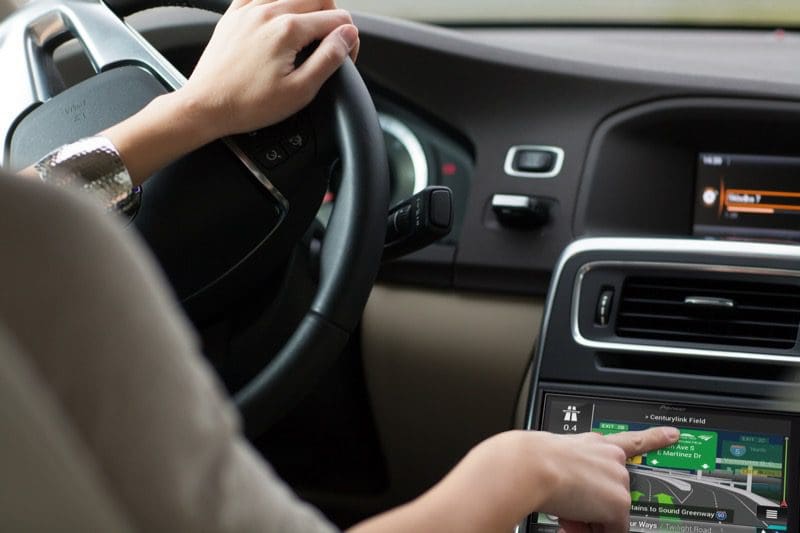 Years ago, upgrading your car stereo meant buying a new radio that would play MP3 files or that included Bluetooth hands-free calling and audio streaming. As automobile manufacturers have increased their interest in providing advanced infotainment features, the aftermarket head unit industry has evolved away from conventional single- and double-DIN radios with segmented displays to multimedia receivers with color touchscreens. In this article, we’ll look at why upgrading your older car or truck with a touchscreen radio is a great way to add convenience and functionality to your commute.
Years ago, upgrading your car stereo meant buying a new radio that would play MP3 files or that included Bluetooth hands-free calling and audio streaming. As automobile manufacturers have increased their interest in providing advanced infotainment features, the aftermarket head unit industry has evolved away from conventional single- and double-DIN radios with segmented displays to multimedia receivers with color touchscreens. In this article, we’ll look at why upgrading your older car or truck with a touchscreen radio is a great way to add convenience and functionality to your commute.
Advantages of a Touchscreen Radio
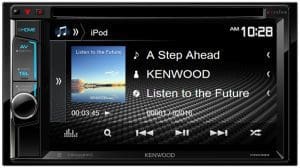 Of course, the biggest benefit of having a touchscreen radio is the amount of information that can be provided. If you are playing an MP3 or WAV file, the song title, artist and album name are easily visible on the screen of the radio. If you are stopped at a red light, searching through your collection of music is quick and easy. Of course, displaying contact information for incoming phone calls is another huge benefit.
Of course, the biggest benefit of having a touchscreen radio is the amount of information that can be provided. If you are playing an MP3 or WAV file, the song title, artist and album name are easily visible on the screen of the radio. If you are stopped at a red light, searching through your collection of music is quick and easy. Of course, displaying contact information for incoming phone calls is another huge benefit.
Increased Safety Features
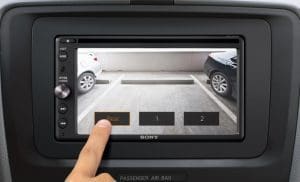 A huge benefit of most touchscreen radios is that you can add a backup camera that will allow you to see what’s behind your vehicle when parking. A backup camera makes maneuvering safer and much more efficient. Parallel parking is much simpler when you know just how close you can get to the vehicle behind you or the curb.
A huge benefit of most touchscreen radios is that you can add a backup camera that will allow you to see what’s behind your vehicle when parking. A backup camera makes maneuvering safer and much more efficient. Parallel parking is much simpler when you know just how close you can get to the vehicle behind you or the curb.
Backup cameras are available in a variety of formats to fit flush with the rear of your vehicle, mount above your license plate or replace a tailgate handle or third brake light assembly on a pickup truck or van. Your local mobile electronics retailer can help you choose a camera system that meets your needs and integrates perfectly with your vehicle.
Easy System Configuration and Fine Tuning
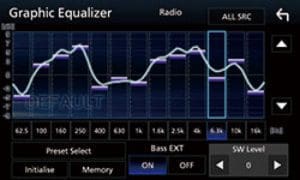 If you are like us, you enjoy fine-tuning your audio system to meet your listening preferences. Many touchscreen radios include multi-band graphic equalizers that will let you dial in the frequency response of your sound system for the music you enjoy. Some also include signal delay settings, crossovers and seating position options that allow your installer to create a realistic listening experience that mimics being at home in your living room or at the mixing console in a recording studio.
If you are like us, you enjoy fine-tuning your audio system to meet your listening preferences. Many touchscreen radios include multi-band graphic equalizers that will let you dial in the frequency response of your sound system for the music you enjoy. Some also include signal delay settings, crossovers and seating position options that allow your installer to create a realistic listening experience that mimics being at home in your living room or at the mixing console in a recording studio.
Extensive Source Options
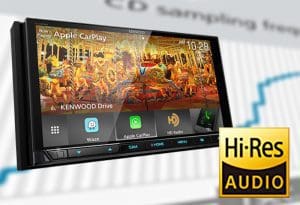 Even the most basic of touchscreen radios includes support for MP3 and WMA file playback from a USB memory stick. As you step up in features and cost, support for WAV, FLAC, AAC and DSD high-resolution audio files is added. Smartphone and iPod connectivity is another common feature with these radios. You can plug in your device and charge the battery while listening to your music collection as you drive. Many units will display album art right on the touchscreen.
Even the most basic of touchscreen radios includes support for MP3 and WMA file playback from a USB memory stick. As you step up in features and cost, support for WAV, FLAC, AAC and DSD high-resolution audio files is added. Smartphone and iPod connectivity is another common feature with these radios. You can plug in your device and charge the battery while listening to your music collection as you drive. Many units will display album art right on the touchscreen.
Many touchscreen radios include auxiliary inputs that allow you to connect a portable media player, laptop computer, game system or a portable satellite radio tuner. Higher-end radios include options to control optional SiriusXM satellite radio receivers directly and let you see the song title and artist information on the screen of your radio.
Vehicle Integration Options
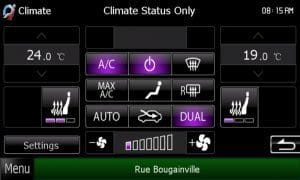 Thanks to the iDatalink Maestro interface, mid- to high-end receivers can connect to factory infotainment systems like Ford Sync or Chrysler’s Uconnect. If you have a factory-installed backup camera or USB port, these can often be used with a new receiver. Parking sensors and vehicle configuration options for climate controls are additional commonly supported functions.
Thanks to the iDatalink Maestro interface, mid- to high-end receivers can connect to factory infotainment systems like Ford Sync or Chrysler’s Uconnect. If you have a factory-installed backup camera or USB port, these can often be used with a new receiver. Parking sensors and vehicle configuration options for climate controls are additional commonly supported functions.
The Maestro interface also allows the factory-installed radio control switches on your steering wheel to work with your new radio.
Apple CarPlay and Android Auto
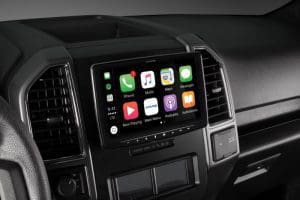 If you are looking for something a little fancier and truly beneficial, check out the options for adding Apple CarPlay and Android Auto to your car. These smartphone integration technologies make it safer and easier to make phone calls, listen to incoming text messages and dictate a response or choose the music you want to hear. You can even ask for turn-by-turn navigation directions to an address in your phone book or a business address searched on the Internet. The navigation directions consider real-time traffic flow information to create an efficient route.
If you are looking for something a little fancier and truly beneficial, check out the options for adding Apple CarPlay and Android Auto to your car. These smartphone integration technologies make it safer and easier to make phone calls, listen to incoming text messages and dictate a response or choose the music you want to hear. You can even ask for turn-by-turn navigation directions to an address in your phone book or a business address searched on the Internet. The navigation directions consider real-time traffic flow information to create an efficient route.
The biggest benefit of CarPlay and Android Auto are that you control these systems using voice commands. The Siri or Google Assistant voice recognition system on your smartphone interprets your verbal requests and sends commands to the radio for execution. You can keep your eyes on the road while communicating with friends, family and coworkers.
Professional Installation is Recommended
While there are a few vehicles that are still easy to work on, integrating a new touchscreen radio into modern cars and trucks requires experience in disassembling the vehicle, knowing which wires to use and being able to program any interface modules to work with the vehicle. For most people, having an experienced electronics installation technician perform the task will not only save time but could prevent serious damage to the computers in the vehicle.
When it’s time to take your mobile audio system to the next level, drop into your local mobile enhancement retailer and ask for a demonstration of the latest multimedia receivers on the market. You’ll find solutions that start around $200 up to the $1,500 range for a fully equipped source unit with smartphone integration, navigation and DVD playback.
This article is written and produced by the team at www.BestCarAudio.com. Reproduction or use of any kind is prohibited without the express written permission of 1sixty8 media.
 Nobody will deny that the Apple iPod is single-handedly responsible for a massive shift in the portability of music. Sure, the Walkman and Discman were important components in the history of portable media players, but those technologies supported existing music formats in the form of cassettes and compact discs. The
Nobody will deny that the Apple iPod is single-handedly responsible for a massive shift in the portability of music. Sure, the Walkman and Discman were important components in the history of portable media players, but those technologies supported existing music formats in the form of cassettes and compact discs. The  In the ’80s and ’90s, going to the record store was a thing. Music enthusiasts knew when new albums would be released and would plan their schedules around making time to be at the store early on those mornings so they’d be the first to get a copy. Fast forward to the 2000s, and access to new music is as simple as a click of your computer mouse or a tap on your phone and a short wait while the album downloads to your desktop or your
In the ’80s and ’90s, going to the record store was a thing. Music enthusiasts knew when new albums would be released and would plan their schedules around making time to be at the store early on those mornings so they’d be the first to get a copy. Fast forward to the 2000s, and access to new music is as simple as a click of your computer mouse or a tap on your phone and a short wait while the album downloads to your desktop or your  Apple’s MFi (Made for iPod/iPhone/iPad) program is a licensing program for companies that develop hardware or software that is designed to communicate digitally with these portable media devices. The original program, called Made for iPod, was launched in 2005 at the Macworld Expo and has evolved to include AirTunes wireless streaming, wireless game controllers and, most recently, devices intended for use with the HomeKit
Apple’s MFi (Made for iPod/iPhone/iPad) program is a licensing program for companies that develop hardware or software that is designed to communicate digitally with these portable media devices. The original program, called Made for iPod, was launched in 2005 at the Macworld Expo and has evolved to include AirTunes wireless streaming, wireless game controllers and, most recently, devices intended for use with the HomeKit 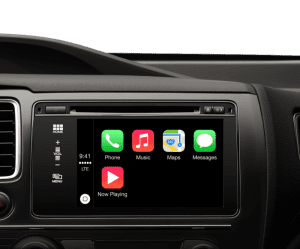 The goal of the MFi program is to ensure that consumers are provided with a predictable experience. Functions may not always work the way you want, but they will work the same on every product that has been through the MFi certification program. Though iPod and iPhone connectivity is a relatively simple process, the recent popularity of CarPlay is where the standards really tax the resources of those who are developing products. Apple tests screen geometry, icon colors and the position of volume function overlays. It has stringent hardware requirements that include strict USB connectivity testing and requirements for an onboard gyro.
The goal of the MFi program is to ensure that consumers are provided with a predictable experience. Functions may not always work the way you want, but they will work the same on every product that has been through the MFi certification program. Though iPod and iPhone connectivity is a relatively simple process, the recent popularity of CarPlay is where the standards really tax the resources of those who are developing products. Apple tests screen geometry, icon colors and the position of volume function overlays. It has stringent hardware requirements that include strict USB connectivity testing and requirements for an onboard gyro. In researching this article, we talked to several companies that develop products under the MFi program. One of them mentioned that they had seen a list of blacklisted device keys in a preview of iOS 12.1 for the iPhone Xs. What does this mean? Any device that connects to an iPod, iPhone or iPad through the Lightning connector must include a small microcontroller that includes a software key. Think of this key like a digital serial number. These microcontrollers are found on all Lightning cables as well as headphone and video adapters.
In researching this article, we talked to several companies that develop products under the MFi program. One of them mentioned that they had seen a list of blacklisted device keys in a preview of iOS 12.1 for the iPhone Xs. What does this mean? Any device that connects to an iPod, iPhone or iPad through the Lightning connector must include a small microcontroller that includes a software key. Think of this key like a digital serial number. These microcontrollers are found on all Lightning cables as well as headphone and video adapters.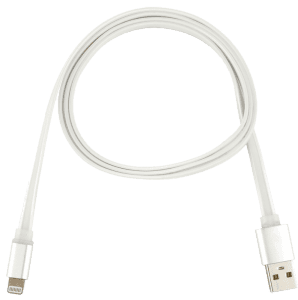 Recently, we’ve seen an influx of inexpensive Lightning cables and charging adapters available for sale at the checkout counter of local gas stations, variety stores and hardware stores. While the price and convenience of these cables are alluring, we want to caution our readers about using devices that aren’t specifically approved by Apple.
Recently, we’ve seen an influx of inexpensive Lightning cables and charging adapters available for sale at the checkout counter of local gas stations, variety stores and hardware stores. While the price and convenience of these cables are alluring, we want to caution our readers about using devices that aren’t specifically approved by Apple. Let’s face it, most of us aren’t really happy with the
Let’s face it, most of us aren’t really happy with the 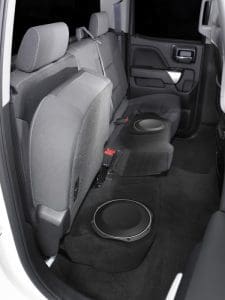 Even the most exotic of factory-installed sound systems cannot produce amazing bass. For most of us, the speakers in the doors don’t play much below about 50Hz. This means we are missing out on more than an octave of the most fun part of our music.
Even the most exotic of factory-installed sound systems cannot produce amazing bass. For most of us, the speakers in the doors don’t play much below about 50Hz. This means we are missing out on more than an octave of the most fun part of our music. Beyond not having enough bass in a factory audio system, the next most common complaint is that the system won’t play loudly enough. While the speakers in your car are limited in their capabilities, the most common issue is a lack of power from the radio or
Beyond not having enough bass in a factory audio system, the next most common complaint is that the system won’t play loudly enough. While the speakers in your car are limited in their capabilities, the most common issue is a lack of power from the radio or 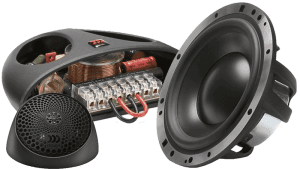 If you have read any number of our articles here at
If you have read any number of our articles here at 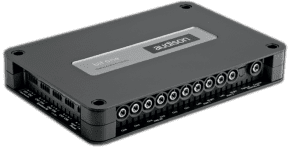 For too long, adding a signal processor has been considered the icing on the cake when it comes to premium audio system design. The reality is, as soon as your budget allows for it, adding a processor can dramatically improve the performance of even a modest installation.
For too long, adding a signal processor has been considered the icing on the cake when it comes to premium audio system design. The reality is, as soon as your budget allows for it, adding a processor can dramatically improve the performance of even a modest installation.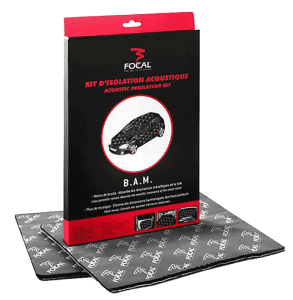 If you have ever upgraded a sound system by switching from an inexpensive amp to a great one, you may have noticed there is less background noise or hiss. When listening to music in our vehicles, we need to try and ignore wind and road noise and sound from the engine and exhaust system. Having your local car audio specialist retailer add a layer of
If you have ever upgraded a sound system by switching from an inexpensive amp to a great one, you may have noticed there is less background noise or hiss. When listening to music in our vehicles, we need to try and ignore wind and road noise and sound from the engine and exhaust system. Having your local car audio specialist retailer add a layer of  No, we aren’t dissing your gangster rap or John Fogerty CDs. There has been a trend of late to focus on high-resolution audio files like FLAC and DSD. While the mechanical limits of these file formats dramatically exceed the listening limits of all humans, the improvement in recording and mastering equipment required to create these recordings is of excellent quality. In short, even within the standard 20Hz to the 20kHz range, high-res audio files sound better because they are created better.
No, we aren’t dissing your gangster rap or John Fogerty CDs. There has been a trend of late to focus on high-resolution audio files like FLAC and DSD. While the mechanical limits of these file formats dramatically exceed the listening limits of all humans, the improvement in recording and mastering equipment required to create these recordings is of excellent quality. In short, even within the standard 20Hz to the 20kHz range, high-res audio files sound better because they are created better. The easiest upgrade is a
The easiest upgrade is a 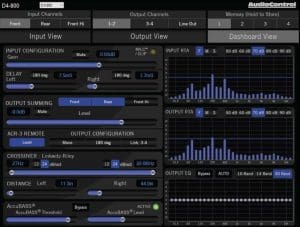 Lots of us like to install car audio equipment at home in our driveway. Do-it-yourself car audio has been popular since the 1970s and always will be. The problem is, it takes more than a solid understanding of electrical theory and physics to install and configure a modern audio system. Qualified installers use tools like real-time analyzers to set crossovers and adjust polarity. They use oscilloscopes to match the amplifier sensitivity settings to the source unit. Investing in this gear is often out of reach for most do-it-yourselfers and often overlooked. If every aspect of your audio system isn’t optimized, you are short-changing yourself on performance.
Lots of us like to install car audio equipment at home in our driveway. Do-it-yourself car audio has been popular since the 1970s and always will be. The problem is, it takes more than a solid understanding of electrical theory and physics to install and configure a modern audio system. Qualified installers use tools like real-time analyzers to set crossovers and adjust polarity. They use oscilloscopes to match the amplifier sensitivity settings to the source unit. Investing in this gear is often out of reach for most do-it-yourselfers and often overlooked. If every aspect of your audio system isn’t optimized, you are short-changing yourself on performance.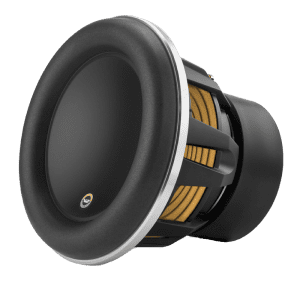 How’s that for a confusing idea? What we are talking about is replacing your existing audio equipment with even better products. Let’s say you had a set of $250 components installed in the doors of your car a few years ago, and the system is tuned to optimize those speakers with a digital signal processor. If you upgrade those to a set of $1,600 components and have the system retuned, the difference will be night and day. Your music will be clearer and more detailed. You’ll be able to pick out subtleties that were otherwise lost. Think of upgrading to amazing speakers like cleaning your glasses: Everything will suddenly become crystal clear. The same applies to upgrading your subwoofers. There is a lot of information in the bottom few octaves of your music. A better sub will recreate your bass with dramatically improved realism.
How’s that for a confusing idea? What we are talking about is replacing your existing audio equipment with even better products. Let’s say you had a set of $250 components installed in the doors of your car a few years ago, and the system is tuned to optimize those speakers with a digital signal processor. If you upgrade those to a set of $1,600 components and have the system retuned, the difference will be night and day. Your music will be clearer and more detailed. You’ll be able to pick out subtleties that were otherwise lost. Think of upgrading to amazing speakers like cleaning your glasses: Everything will suddenly become crystal clear. The same applies to upgrading your subwoofers. There is a lot of information in the bottom few octaves of your music. A better sub will recreate your bass with dramatically improved realism. In the ’80s, ’90s and early part of the 2000s, upgrading the car stereo system in your vehicle was a relatively simple process. You’d start by picking out a new radio that offered the features you wanted and add a set of speakers to improve the sound of the system. Pretty much anyone with a basic understanding of electrical systems could use a wire harness adapter to install the radio, and the speaker installation was usually a drop-in upgrade, save for having to crimp on some spade connectors.
In the ’80s, ’90s and early part of the 2000s, upgrading the car stereo system in your vehicle was a relatively simple process. You’d start by picking out a new radio that offered the features you wanted and add a set of speakers to improve the sound of the system. Pretty much anyone with a basic understanding of electrical systems could use a wire harness adapter to install the radio, and the speaker installation was usually a drop-in upgrade, save for having to crimp on some spade connectors.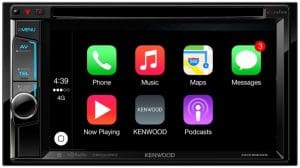 Fast-forward to 2010 and beyond, and the world of
Fast-forward to 2010 and beyond, and the world of 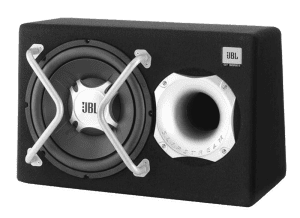 When you take your new car to a shop for a sound system upgrade, there are a few steps required to ensure you will get the performance you want from the system. The first should be a series of questions from the salesperson about how you enjoy your music. Do you listen at high volume levels? Do you like lots of bass? Some will ask you what kind of music you listen to to help understand your goals for your audio system. For the truly dedicated, the questions should include a query about what you hope to improve by upgrading the system. A visit to your vehicle can often provide valuable insight into what’s missing. If you have the bass turned up on the factory radio, you may benefit from a
When you take your new car to a shop for a sound system upgrade, there are a few steps required to ensure you will get the performance you want from the system. The first should be a series of questions from the salesperson about how you enjoy your music. Do you listen at high volume levels? Do you like lots of bass? Some will ask you what kind of music you listen to to help understand your goals for your audio system. For the truly dedicated, the questions should include a query about what you hope to improve by upgrading the system. A visit to your vehicle can often provide valuable insight into what’s missing. If you have the bass turned up on the factory radio, you may benefit from a 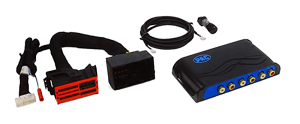 Where the expertise of a mobile electronics specialist retailer shines is in knowing how your factory stereo works and, subsequently, how to upgrade it. Remember the signal processing we talked about at the beginning of the article? If a shop sells you a new set of speakers without addressing this tuning, you may not like the results. There are three options available to deal with this processing. If you can, a new radio and potentially a new amplifier will eliminate the tuning. Audio interfaces include the PAC AmpPRO, iDatalink AR, Axxess AX-DSP or one of the many ZEN-Audio solutions from Nav-TV. Finally, you can add an amplifier with a digital signal processor to correct the tuning for the new speakers. There’s no “best” answer to your upgrade needs, as each vehicle and client’s goals differ.
Where the expertise of a mobile electronics specialist retailer shines is in knowing how your factory stereo works and, subsequently, how to upgrade it. Remember the signal processing we talked about at the beginning of the article? If a shop sells you a new set of speakers without addressing this tuning, you may not like the results. There are three options available to deal with this processing. If you can, a new radio and potentially a new amplifier will eliminate the tuning. Audio interfaces include the PAC AmpPRO, iDatalink AR, Axxess AX-DSP or one of the many ZEN-Audio solutions from Nav-TV. Finally, you can add an amplifier with a digital signal processor to correct the tuning for the new speakers. There’s no “best” answer to your upgrade needs, as each vehicle and client’s goals differ. Before you balk at the cost of adding a DSP and amp to your
Before you balk at the cost of adding a DSP and amp to your  Let’s look at how we handle the tuning in the vehicle. You’ll need an amplifier with a built-in DSP. There are lots of compact solutions available from companies like JL Audio, Mosconi, Helix, Audison, AudioControl, Sony, Alpine and Kicker. A suitable
Let’s look at how we handle the tuning in the vehicle. You’ll need an amplifier with a built-in DSP. There are lots of compact solutions available from companies like JL Audio, Mosconi, Helix, Audison, AudioControl, Sony, Alpine and Kicker. A suitable 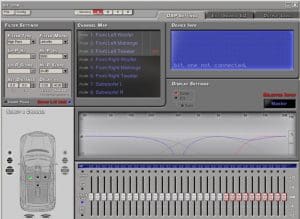 Take a deep breath. Talking about spending thousands of dollars on a speaker upgrade might scare a lot of people. The question is, are the upgrades worthwhile? When executed by a properly trained technician, the answer is unquestionably yes! Not only will new speakers play louder, they produce less distortion to make your music clearer and more detailed. The signal processor can be used to fine-tune the system to provide the overall sound balance you want. Most people enjoy smooth and natural midrange with some accentuation in the midbass region and a little more in the bass region. Your technician can
Take a deep breath. Talking about spending thousands of dollars on a speaker upgrade might scare a lot of people. The question is, are the upgrades worthwhile? When executed by a properly trained technician, the answer is unquestionably yes! Not only will new speakers play louder, they produce less distortion to make your music clearer and more detailed. The signal processor can be used to fine-tune the system to provide the overall sound balance you want. Most people enjoy smooth and natural midrange with some accentuation in the midbass region and a little more in the bass region. Your technician can  In 1982, Michael Knight was able to talk to his 1982 Pontiac Firebird and ask it for navigation directions. Of course, watching “Knight Rider” meant that we understood that KITT was make-believe. Fast-forward 35 years, and talking to our vehicles is now a reality, thanks to our
In 1982, Michael Knight was able to talk to his 1982 Pontiac Firebird and ask it for navigation directions. Of course, watching “Knight Rider” meant that we understood that KITT was make-believe. Fast-forward 35 years, and talking to our vehicles is now a reality, thanks to our 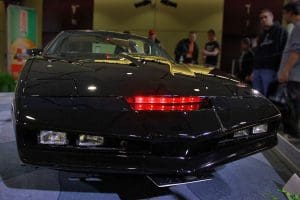
 Long before we had to worry about looking at maps on our phones, we had to deal with the issue of people talking on their phones while driving. Distracted driving is a serious issue and is the cause of many accidents and fatalities. In 2013, more than 3,000 people were killed because of distracted driving. In 2015, more than 391,000 injuries were caused by driver distraction.
Long before we had to worry about looking at maps on our phones, we had to deal with the issue of people talking on their phones while driving. Distracted driving is a serious issue and is the cause of many accidents and fatalities. In 2013, more than 3,000 people were killed because of distracted driving. In 2015, more than 391,000 injuries were caused by driver distraction. We started talking about asking our phones for directions. Portable
We started talking about asking our phones for directions. Portable  Unlike the voice recognition system built into portable navigation devices that listened for specific phrases or requests, Apple’s Siri and Google’s Voice Assistant can interpret common language communication to perform commands or execute requests. “Navigate to” has been replaced with “find me a,” “take me to” or “get directions to” whatever address or location you want. These systems capture what you say, analyze the content on their servers, then send the required commands back to the phone.
Unlike the voice recognition system built into portable navigation devices that listened for specific phrases or requests, Apple’s Siri and Google’s Voice Assistant can interpret common language communication to perform commands or execute requests. “Navigate to” has been replaced with “find me a,” “take me to” or “get directions to” whatever address or location you want. These systems capture what you say, analyze the content on their servers, then send the required commands back to the phone. Apple CarPlay and Android
Apple CarPlay and Android  Automakers are working to allow our vehicles to talk to each other in order to reduce traffic congestion and the chance of accidents. For this to happen, your car or truck needs to know where all the vehicles around it are located and where they are going. The hardware exists today to make this happen, but the communication networks aren’t fast enough to implement the system.
Automakers are working to allow our vehicles to talk to each other in order to reduce traffic congestion and the chance of accidents. For this to happen, your car or truck needs to know where all the vehicles around it are located and where they are going. The hardware exists today to make this happen, but the communication networks aren’t fast enough to implement the system.